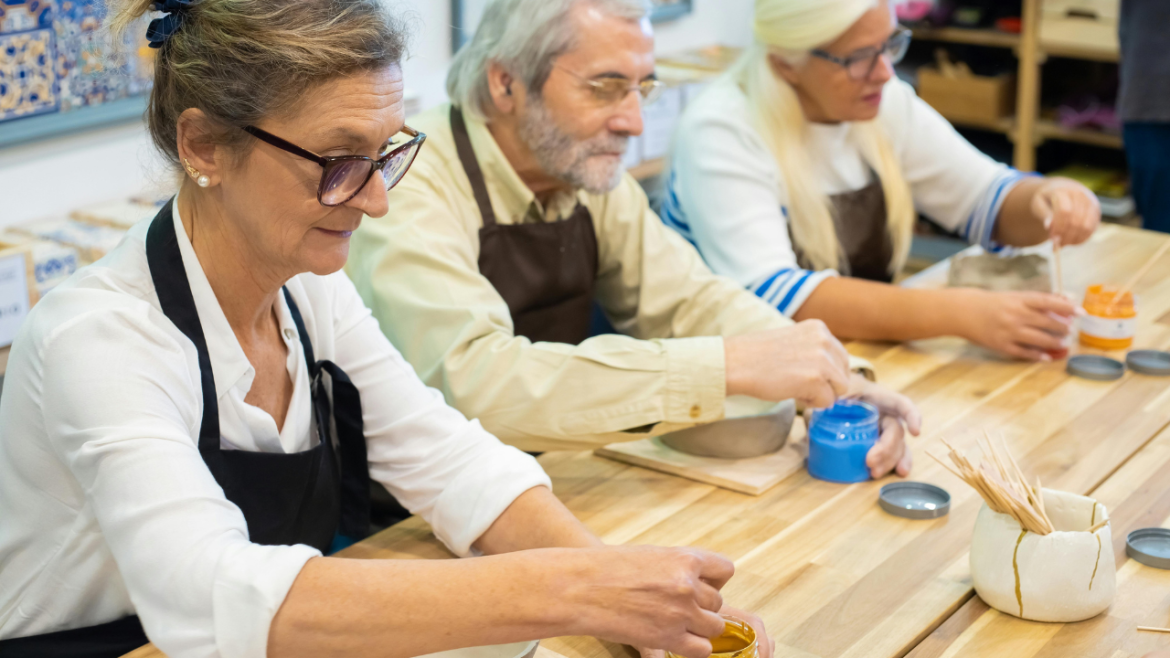Indoor Activities For Seniors
As seniors age, staying active becomes essential not only for physical health but also for emotional well-being. While outdoor activities often capture attention, indoor activities provide a safe and controlled environment for seniors to engage their minds and bodies.
These activities can help prevent isolation, boost mood, and maintain mobility, making them vital for holistic senior care. Understanding the value of indoor activities is essential for family members, caregivers, and seniors themselves.
The Importance of Mental Engagement
Mental stimulation is crucial for seniors to maintain cognitive function and emotional resilience. Indoor activities such as puzzles, reading, or even learning a new skill can sharpen memory, enhance focus, and reduce the risk of cognitive decline.
Many seniors find joy in activities like arts and crafts, painting, or playing musical instruments, which not only encourage creativity but also provide a sense of accomplishment. The feeling of mastery and the satisfaction of creating something tangible can significantly uplift a senior’s mood and self-esteem. Transitioning between mental activities and physical engagement indoors ensures a balanced lifestyle that nurtures both mind and body.
Physical Activity Without Leaving Home
Maintaining physical fitness is equally important, and indoor activities offer numerous opportunities for movement that are gentle yet effective. Light exercise routines such as stretching, chair yoga, or resistance band workouts can enhance flexibility, strengthen muscles, and improve circulation without the risk of outdoor hazards.
Seniors who engage in regular indoor physical activity often report increased energy levels, better balance, and reduced joint pain. Integrating simple daily routines like walking through the house, climbing a few steps, or practicing controlled movements can contribute to overall health while keeping the body active and engaged.
Social Connection Indoors
Loneliness and social isolation are challenges many seniors face, and indoor activities can play a pivotal role in fostering meaningful connections. Hosting small gatherings, participating in group games, or joining online communities allows seniors to interact with peers and family members. Activities such as board games, card games, or collaborative projects encourage conversation, teamwork, and laughter.
These social interactions are not just enjoyable; they have been linked to lower stress levels, improved mental health, and even increased longevity. By combining social engagement with structured indoor activities, seniors can maintain their sense of community without leaving the comfort of their homes.
Emotional and Therapeutic Benefits
Indoor activities also offer emotional support and therapeutic benefits, especially for seniors experiencing stress, anxiety, or health challenges. Activities like journaling, meditation, or gentle music sessions can help seniors process emotions, find calm, and cultivate mindfulness. The ability to focus on enjoyable tasks provides a sense of purpose and direction, reducing feelings of boredom or helplessness.
Caregivers often observe that seniors who regularly engage in these therapeutic indoor activities display greater emotional stability and resilience, leading to a more positive outlook on daily life. Transitioning smoothly between calming and stimulating activities ensures that seniors remain balanced, engaged, and emotionally nourished.
Creating a Supportive Environment
The effectiveness of indoor activities greatly depends on creating a supportive and safe environment. Ensuring adequate lighting, comfortable seating, and organized spaces allows seniors to participate fully without unnecessary strain or risk. Personalized activity plans that consider an individual’s physical abilities, interests, and preferences are more likely to succeed, as seniors feel understood and motivated.
Caregivers can introduce new activities gradually while maintaining familiar favorites to keep engagement high. By thoughtfully arranging indoor spaces and activity schedules, families can transform a simple room into a hub of learning, movement, and social connection.
Sustaining Quality of Life
Ultimately, indoor activities for seniors go beyond mere entertainment. They sustain mental acuity, physical health, social engagement, and emotional well-being. Seniors who regularly participate in structured and enjoyable indoor activities often experience a higher quality of life, greater independence, and a stronger sense of self-worth.
Encouraging consistent indoor activity routines, combined with occasional outdoor engagement when possible, creates a balanced lifestyle that honors the needs and preferences of seniors. Every activity, whether mental, physical, or social, contributes to a richer, more fulfilling day, reminding seniors and caregivers alike of the importance of purposeful engagement at every stage of life.

